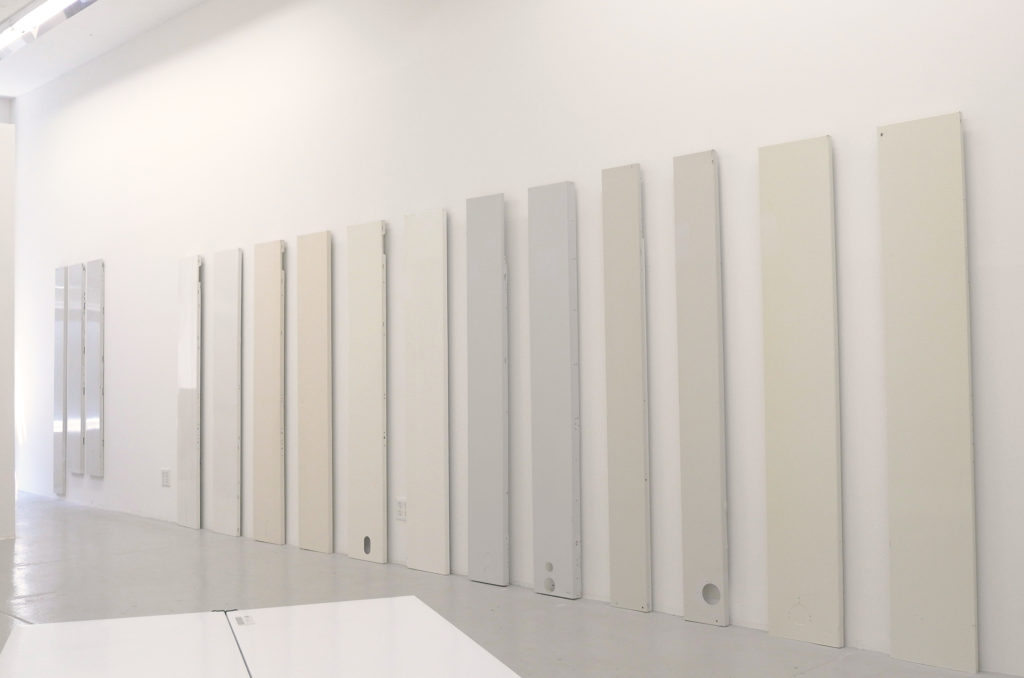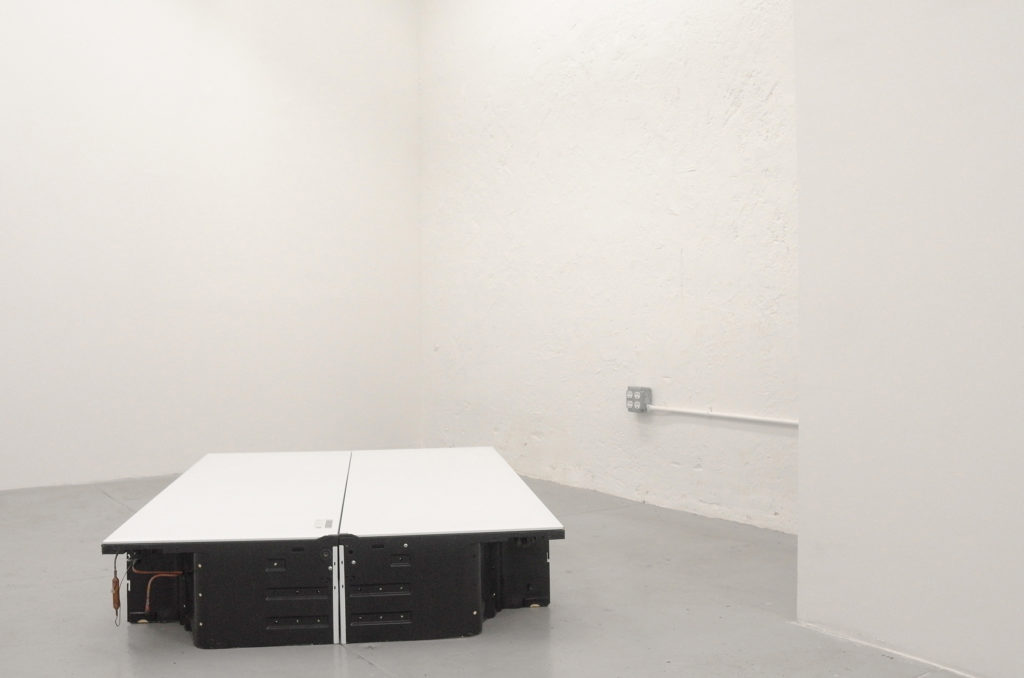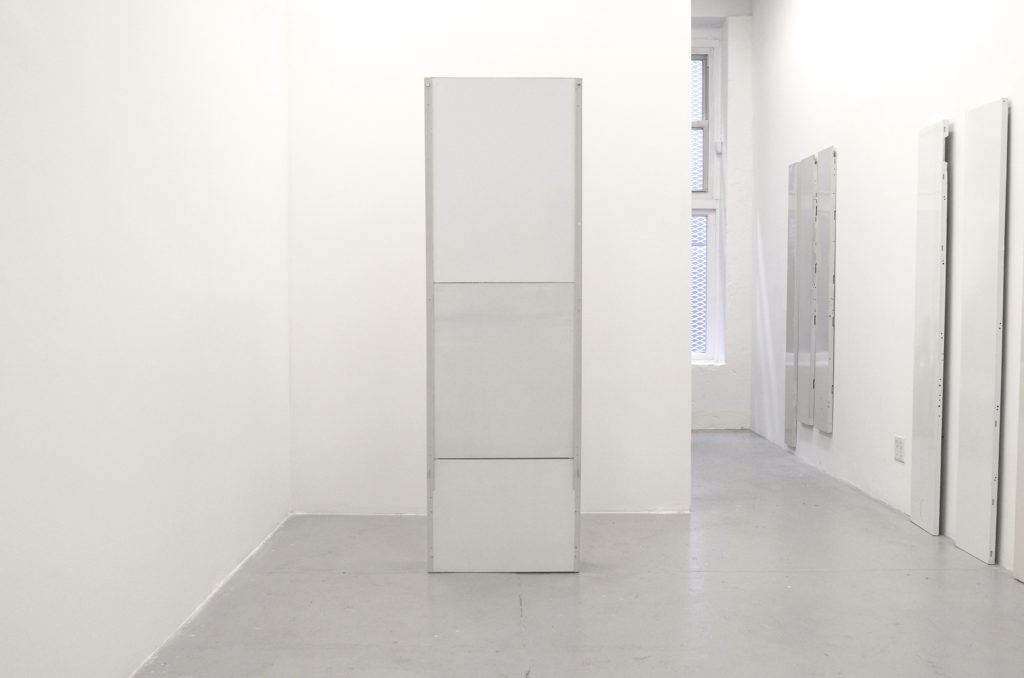Disillusionment of 11 A.M.
Goen Choi
10 May-16 June 2019
The houses are haunted.
Wallace Stevens' diagnosis of American life could apply to Korean households if houses are replaced by apartments. Stevens' houses are haunted by white nightgowns; the apartments by white air conditioners. These are tall, free-standing air conditioners placed in every living room corner. The apartments are haunted by the same furniture, same arrangements, same rooms, plagued with the same desires that came with the proliferation of apartments filling cities and towns. The Republic of Korea is often referred to as the Republic of Apartments. Their desires are as standardized as the apartments; their lives grow with bigger and newer ones. They are not dreaming of baboons and periwinkles for sure.
Goen Choi's interest in interior space is prevalent in earlier works. For Bulbs (2012), she took all the bulbs that were embedded on the ceiling in a building's lobby and arranged them in the same exact location, only on the floor. It may seem to be a Minimalistic approach but in essence is more of a recognition and reaction to where things are, how they are, and what they are. It is a reaction, indeed, rather than an action, may even look like a child's prank, and is undoubtedly subversive. The light is gone now; the elements of the ceiling are now sitting on the floor. Heaven and earth are slightly overturned.
Choi cut her first refrigerator in 2015. She cut it in half and placed its side down on the floor as if it were a big coffee table. Snow White, a fridge cut in half, is undoubtedly reminiscent of Splitting (a house cut in half) by Gordon Matta-Clark. Ever since this act, she continues to manipulate old, trashed household electronics and furniture, finding refrigerators, air conditioners, generic bookcases, desks, etc from junkyards. She cuts them, pulls them apart, and arranges the parts in a minimalist fashion. Or reassemble them into what they used to be using different materials and structures. Not unlike what Matta-Clark was doing to buildings, her daily labor has been undoing, unbuilding, destructing, defunctionalizing, restructuring, reorganizing, retranslating, redefining, and rethinking these mass-produced, domestic objects.
In White Home Walls, panels from tall, standing air conditioners are arranged in a way that might remind us of John McCracken's Beam works. His work leans against the wall; hers not. These thin panels are precariously standing at a right angle to the floor as if they were some kind of shield or ghosts. Tall, standing air conditioners are ubiquitous in Korean homes (they might, indeed, scare you at night), being updated to new versions every few years like iPhones. They are all whites like in color charts. Manufactured from 1995 to 2010; a time when these whites were trendy and desired, are now turned off-white, much like the desire for them is abandoned for newer, shinier products.
The standing Figure looks like a little building rather than a human body. She took the parts of the air conditioners and fridges and assembled them into an approximate form of a standing air conditioner which is normally around 5.8 to 6.4ft. Home electronics are human scale like furniture, naturally. She took these electronics apart and put them back together as a child would do with toys. Playing is bodily work. Her body is the starting point of all she does. She scouts old electronics going from one junkyard to another, doing all the cutting and assembling herself. She often says that she is motivated by this physical feeling of being overwhelmed. One morning, after her husband went to work, she was sitting in the kitchen in their new apartment they got when they were married when she had this sudden urge to turn that vertical thing (a fridge) into a horizontal.
In Korean, a wife is 아내 (Anae) which means an indoor person. Traditionally, a husband is expected to provide an apartment for his wife to fill with furniture, electronics, and all the rest. This is somewhat of a standard arrangement before marriage. And it is women who do the housework using these appliances. It is not surprising to see at the center of Korean women's desires, new refrigerators, new air conditioners along with new big apartments. You are living in a house of desire, especially built by other people, and you might realize at one point you don't even know what you really desire other than cutting a fridge in half.


